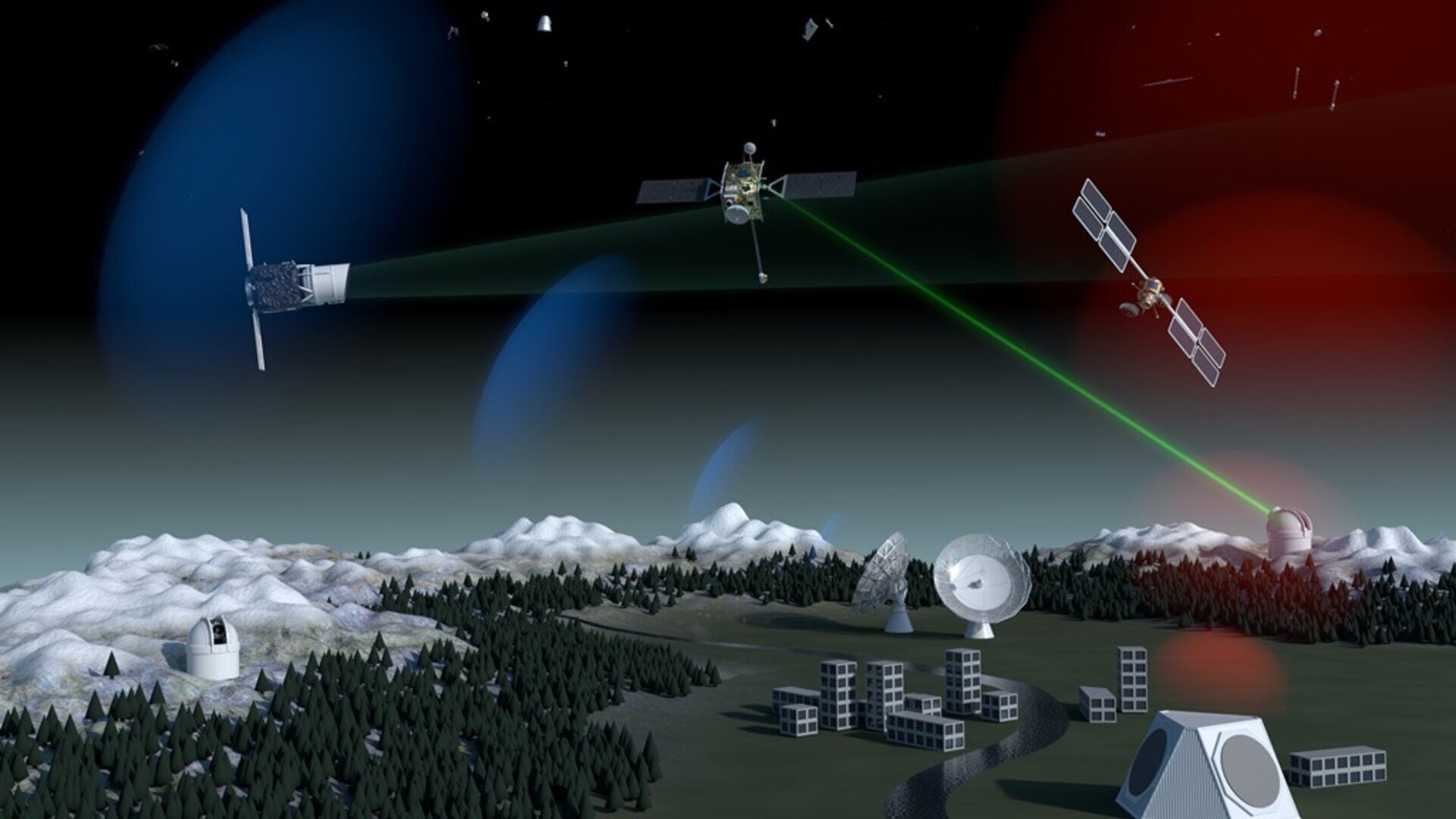
Radar, telescopes and software-based models and analytics are the pillars of space situational awareness. (ESA image.)
AMOS 2023 — At the annual Advanced Maui Optical and Space Surveillance Technologies (AMOS) Conference this week, industry experts are focusing on showing how their technical chops can help the Pentagon up its “lagging” game monitoring the heavens — but also hoping to gain insights into how the Space Force intends to flesh out its as yet largely unrealized plans for contracting them to do so.
The Defense Department’s new, unclassified space policy/strategy stresses the central importance of “detecting and attributing hostile acts in, from and to space,” but also alludes to the growing difficulties in keeping eyes on the heavens as the number of spacecraft just keeps expanding.
Further, according to government and industry officials alike participating in AMOS, the Space Force continues to face budgetary and technical challenges, in particular to its ongoing efforts to find ways to better integrate space tracking data provided by commercial and allied partners.
The DoD report to Congress on Pentagon space policy and strategy, released on Sept. 14, stresses that space domain awareness (SDA) is foundational for deterring and countering adversaries in any future conflict.
“The Department must be able to accurately and rapidly detect, track, and characterize space assets and other space objects to safely conduct space operations and to effectively deter, and, if necessary, counter and respond to hostile acts in space,” the document says. “Providing space operators with relevant, timely data can help to prevent operational surprise and support efforts to protect and defend space assets.”
This is becoming more and more difficult, due to growing congestion on orbit, the document explains.
“In 2022, space launch providers around the world conducted a record 177 launches, a 31 percent increase from 2021. DoD currently tracks approximately 47,900 objects in space, a 16 percent growth in objects from 2021 to 2022. Of those objects, 7,100 are active payloads, a 37 percent increase from 2021 to 2022. Expended rocket bodies, inactive satellites, and debris further congest the space environment.”
To solve that problem, the report says, the Space Force’s current capabilities need to be augmented, “requiring an integrated sensor system that leverages DoD, other U.S. Government, and international and commercial partner services.”
Budgetary, Technical Obstacles
Creating such a holistic system, however, is proving problematic. The Space Force and US Space Command have a number of internal efforts to improve current SDA capabilities — ranging from the new SILENTBARKER satellites developed jointly with the National Reconnaissance Office to ongoing updates to computer systems and software designed to get needed data to operators.
Meanwhile, both organizations also are working on a handful of programs to better cooperate with allies, such as the United Kingdom, Australia and Japan, as well as to crack the code on how to tap into proliferating commercial capabilities.
But as recently as the annual Space Symposium in April, Chief of Space Operations Gen. Chance Saltzman said SDA capabilities are “still lagging.”
One challenge is budget. The DoD space policy/strategy reveals that the Pentagon’s fiscal year 2024 budget “requests $481 million in ground and space-based sensors, deep space radar, and ground-based optical system projects to improve the capability and resilience of DoD SDA. The budget requests an additional $131 million to produce highly accurate, rapidly available detection, tracking, and characterization of space objects, regardless of their origin.”
That total of $612 million, however, isn’t all the big in terms of Pentagon programs — especially given the high priority of the mission area. For example, by contrast, the Space Force is seeking some $5 billion in FY24 for missile warning and tracking.
Meanwhile, augmenting service capabilities with foreign and commercial data continues to be bedeviled by a host of technical challenges, primarily related to the inability of Space Force computer systems to integrate observational data provided by sensors outside of its own Space Surveillance Network.
One of the key problems is that the database set up to house that outside data, the Unified Data Library, initiated in 2019, still does not directly interface with the operating systems used by the Space Force on a daily basis, the Government Accountability Office (GAO) found in an April study. Finding a way to fix that, said one industry rep here, is going to critical to making commercial data actual work for the Space Force.
Further, GAO said the Space Force doesn’t have a process for routinely identifying what commercial SDA capabilities are available at any one time and assessing how they might help — with efforts up to now comprising experiments and ad hoc acquisition. DoD since 2022 has acquired only some very limited commercial data through SPACECOM’s Joint Task Force-Space Defense Commercial Operations Cell, and under an agreement with Space Force intends to provide the cell with some $110 million from this year through 2027, according to GAO. In addition, the Space Force’s Commercial Space Office hopes to be able to set up a dedicated budget line to directly buy commercial space services, including for SDA, that would see first funding in 2025.
How to overcome these obstacles to commercial SDA acquisition and integration are among the issues expected to be addressed in the service’s pending commercial integration strategy, now being finalized by Saltzman and Air Force Assistant Secretary for Space Acquisition and Integration Frank Calvelli.






















